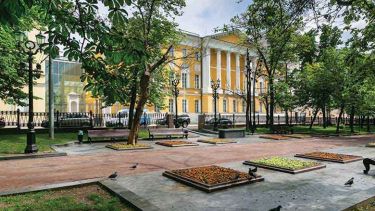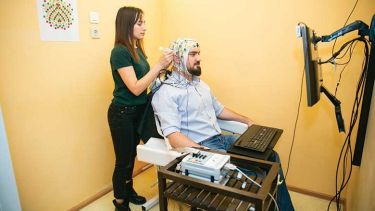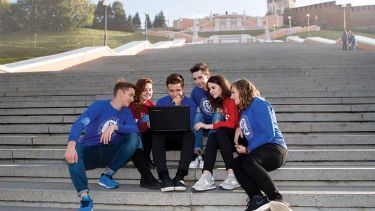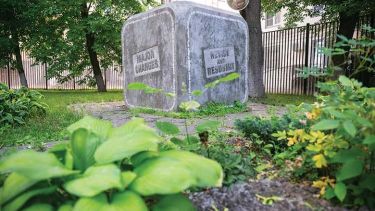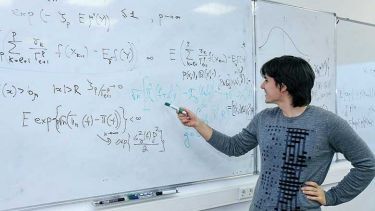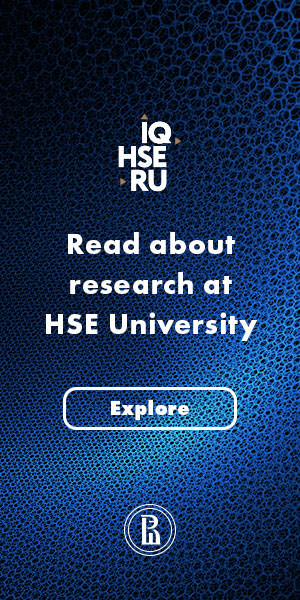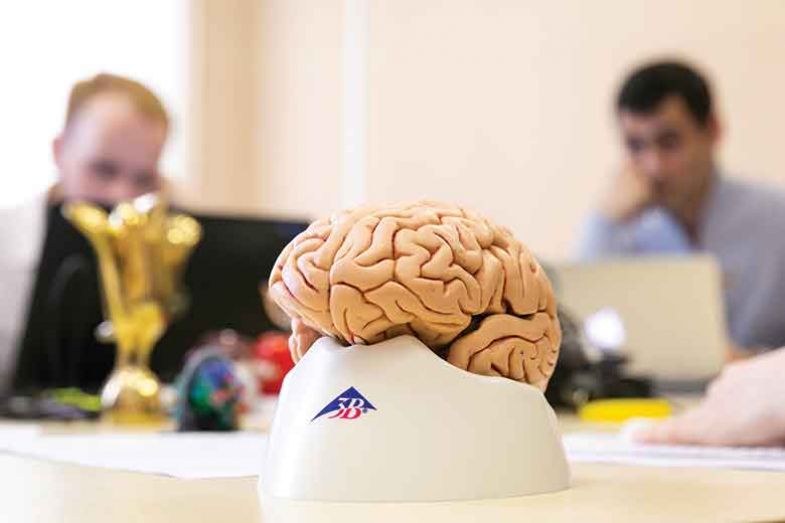
Source:
HSE University

HSE University’s Center for Language and Brain is collaborating with practitioners in neurosurgery and aphasia to deepen its research in psycholinguistics and neurolinguistics
The Center for Language and Brain at HSE University in Moscow was established in 2018, having grown out of its neurolinguistics laboratory. With funding from a Russian Federation government grant, the laboratory’s head, Olga Dragoy (pictured, below), leads a team of 35 academics from a variety of backgrounds – including physics, clinical psychology and biology – who collaborate on multidisciplinary research into psycholinguistics, speech pathology, child language acquisition, bilingualism and the relationship between language and ageing.
As director and chief research fellow of the Center for Language and Brain, Professor Dragoy advocates senior faculty taking a hands-on approach. “We still love to get our own hands dirty with real research, with collecting data, with data analysis,” she says.
“I see the patients myself.”
The laboratory’s teaching takes a similar approach. Professor Dragoy explains that international students who arrive at HSE from European universities are afforded a unique opportunity to work in a clinical environment.
“This is what they missed in Europe when they studied,” she says. “Of course, they had a neuroimaging course or an aphasiology course, but a chance to see a patient, to test a patient, to do an experiment – this is what they get here immediately.
“On the first day they come, I put them in working projects and they see patients. They get wonderful neuroimaging data to analyse for the first time in their lives.
“I am proud that we have these possibilities to give to students.”
One of HSE’s strategic goals is to reduce the distance between its teaching and research, and the Center for Language and Brain provides a neat example of how this evolution might take place in practice.
Building a school is not easy and many of HSE’s challenges lie in translating the laboratory’s multidisciplinary framework into what are typically more specialised undergraduate and master’s programmes.
Students are encouraged to study abroad to broaden their experience working in as many different laboratory environments as possible. “It is impossible to fully work in our field for a recent graduate,” says Professor Dragoy. “You need to be very highly trained.”
Just as HSE students pursue learning opportunities outside their own country, much of the laboratory’s research focus demands an international outlook.
“It is a natural path of the science we do,” says Professor Dragoy. Languages such as Russian and English do not have all the linguistic features required to satisfy scientific enquiry, and so Professor Dragoy and her colleagues must look further afield to advance their research into psycholinguistics and, in turn, their understanding of how culture can influence how we process language.
“This is a very old question,” says Professor Dragoy. “But we asked it in a very experimental plane and, for the first time, in relation to language grammar. It was a very neat experiment. When we presented a verb orally, either in the past or the future tense, you [could] see a physical reaction.”
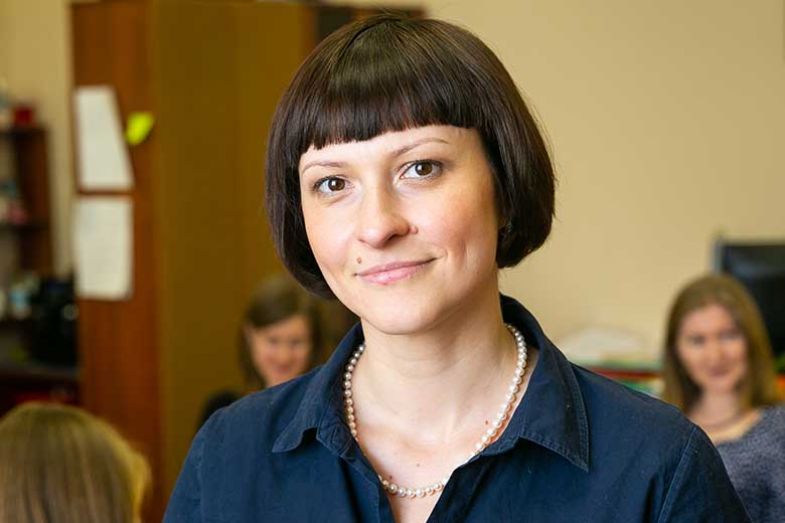
In order to conduct such experiments, the laboratory collaborated with the University of Haifa in Israel. Subjects were instructed to look at the centre of a screen while they were orally presented with a verb in past and future tenses. Their eye movement was tracked to measure degrees of drift in response to the stimuli.
“We tested a Russian, writing from left to right – very boring – and found at least what we expected,” says Professor Dragoy. “When people heard a verb in the past tense, we observed eye drifts to the left and when they heard the future tense, they drifted to the right.”
The University of Haifa’s subjects were tested in Hebrew. Its writing orientation runs from right to left, and the researchers witnessed an equal reaction in the opposite direction.
“It started around 200 milliseconds after a person heard the verb and developed for another 400 milliseconds,” says Professor Dragoy. “It was incredible.”
This, she says, is why it is important for trained linguists to seek out different languages – to study ergative languages, such as Georgian, or to journey to the Colombian Amazon to study Tuyuca and see how those speaking the language, with its five grammatical markers for evidentiality, would interact with their indigenous language and the more widely spoken Spanish.
“They grew up with this grammatical necessity,” says Professor Dragoy. “I sent two lab members there. They spent a month in the jungle and tested two villages. They collected their narratives in both the Tuyuca and the Spanish languages. They also did an eye-tracking experiment there. It was amazing.”
Professor Dragoy says that studying Tuyuca helps to enhance our understanding of language, determining whether the manner of processing it is universal.
But this is only half the story. There is a clinical element to her research that sees HSE University foster collaborations on aphasia treatments that facilitate access to patients, enabling experiments to be run in real time, and for the laboratory’s expertise in lesion symptom-mapping to support its therapeutical work.
Perhaps the most striking example of its therapeutical support concerns the inter-operational testing of neurosurgery patients.
These subjects might be scheduled for the resection of a tumour but must be tested for and made aware of the consequences for speech and language processing.
“We develop and pick up specific tasks, like if you are here in the brain doing this resection of the brain, we give you action naming; if you are here we give you phoneme discrimination, because this is the part of the brain that is doing phoneme discrimination.”
With the neurosurgeon briefed on which parts of the brain are functionally relevant to language, the patient, who is awakened mid surgery, can cast the deciding vote on which surgical strategy to take.
This process has obvious benefits to the surgeon and the patient. It also gives researchers an enormous amount of data from which they can draw insights that have real-world applications. It is these insights that
may advance clinical treatment in the future.
Find out more about HSE University

